Bold colour. Confident strokes. Clear value pattern. Strong design. These are all phrases I would use when describing work by Jen Evenhus. And they are all things I admire and strive for in my own work. So you can imagine how pleased I was when she agreed to share one of her ideas about painting with us.
Before I let her loose on you, let me whet your visual appetite. Twice I’ve featured her paintings in the monthly round-up posts, first in March 2015, and then again in December 2015.
And here’s a landscape I’ve loved for sometime:

Jen Evenhus Bio
A few things to tell you about nationally recognized award-winning artist, Jen Evenhus. She’s a Master Pastelist in the Pastel Society of America, a Distinquished Pastelist in the Northwest Pastel Society, and a Signature Member of the Pastel Society of the West Coast. Her work has been published in magazines such as American Artist (which stopped publishing at the end of 2012) and the Pastel Journal; most recently in the April 2015 issue of Pastel Journal with two Honorable Mentions in the Pastel 100 Competition. She is an established national workshop instructor, giving “The Beauty of Imperfection” pastel workshops. You can see more of her work and learn more at her website.
And now, heeeeeere’s Jen!
In Jen Evenhus’s Words
You spent years in college learning how to paint a landscape or a still life. Or a portrait of Aunt Millie. You take a workshop or two every year to hone your technique, hoping the instructor’s expertise will rub off and you’ll miraculously wake up and be an accomplished artist. Yes, all these move you toward your goal of having your work in the favorite art magazine of the day or having a prestigious gallery come knocking on your door.
But wait! There’s one thing that most college art professors and pastel workshop instructors fail to teach – when and how to leave it alone. I’m not talking about deciding when to stop, when your painting is complete, but rather how to leave areas of your painting untouched for effect. Some of the most beautiful passages in a painting are those where the artist left it alone.

So, what do I mean? Look at the detail of Arroyo Drive Palms. Do you see the area in the middle – the “leaves”? Note how I did some negative painting, leaving the underpainting peeking through to “create” the palm leaves… essentially leaving it “unpainted.” Now look at the entire painting – can you see other areas like that one? There are many other areas that were left “unpainted” – indicating bunches of leaves or fronds.
A second painting of palm trees, Paint Pony Palms, shows an underpainting of bold pink. If you look closely in the upper frond area and in the lower pink area, you’ll notice a lot of the darker pink is the “unpainted” vibrant warm underpainting showing through, harmonizing the entire painting, an added benefit of underpainting.

When I create a painting, I want the viewer to have a visceral response to it. I want him to impart his own memories and experiences into the emotion he feels viewing the artwork. I don’t want to give him all of the information. I want him to make it up in his mind, using his own life experiences.
I compare Leave It & Love It to the philosophy of Yin and Yang. Here’s a great description from the Wikipedia entry:
In Chinese philiosophy, yin and yang (also yin-yang or yin yang, “dark—bright”) describes how opposite or contrary forces are actually complementary,interconnected, and interdependent in the natural world, and how they give rise to each other as they interrelate to one another. Many tangible dualities (such as light and dark, fire and water, expanding and contracting) are thought of as physical manifestations of the duality symbolized by yin and yang…. Yin and yang can be thought of as complementary (rather than opposing) forces that interact to form a dynamic system in which the whole is greater than the assembled parts.
So you can think of the “unpainted” areas as Yin – “the passive energy of silence, slow and relaxed movements, and deep darkness, and the predominant energy of sleep, resting, relaxing, and replenishing.”
And the “painted” areas as Yang – “the active energy symbolized by bright lights, strong sounds, and bright colors. It is the prominent energy for such times as working in a busy office or enjoying a good party.” (Quoted from Nancy Hellstrom’s article, ‘Yin and Yang – What Does It Mean?’)
Leaving parts of the painting “unpainted” creates contrasts – texture vs smooth, color vs neutral, dark vs light, energy vs calm.

Look at Willamette Whisper – a good example of Leave It & Love It. See the areas that peek through the energetic strokes? Those areas are the “restful” areas – they give the eye, and the mind, a moment to rest before moving on to the next area full of dynamic color and energetic strokes.
Paintings don’t always turn out. Having to scrub might be one of the best things that happen during the painting process.
A good way to scrub is to take an old kitchen towel and hold your painting over a garbage can and scrub off the area that isn’t working, creating a lovely muddy neutral color – a perfect opportunity to Love It & Leave It by painting again but leaving areas “unpainted.”
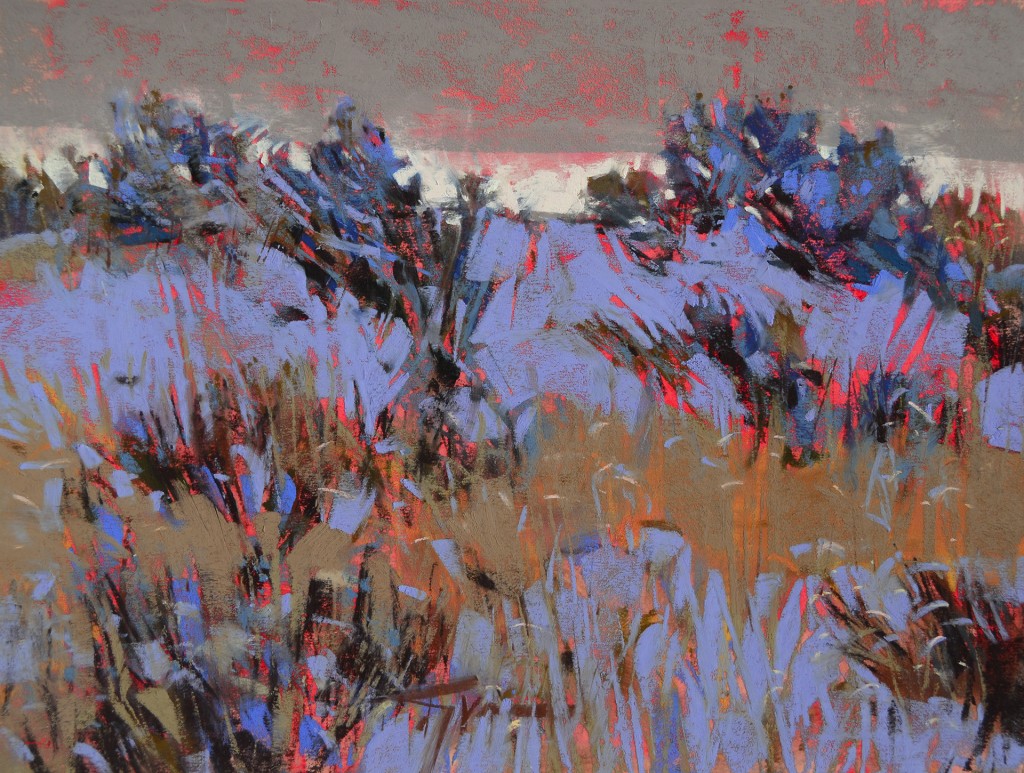
Wheatgrass Waltz, is a good example of Leave It & Love It. When you look closely at this painting, you begin to realize that the luscious bright pink areas are the underpainting peeking through.
I left those areas alone! I did not paint over them, allowing for harmony and energy to work together, producing a dynamic painting. Yin & Yang. I especially like the gray sky area . . . a gray pastel was scumbled across the pink underpainting, creating an ominous sky that threatens an impending snow storm.

Stand Strong is perhaps the best example of Leave It & Love It. I tinted the pastel ground bright red before painting it onto a panel. As I worked into this image, I wanted to be sure to leave a good amount of the strong vibrant red for a dramatic effect. The juxtaposition of the trees against the red underpainting creates a mysterious forest that beckons you into her depths, but you’re terrified to take that first step. The entire red portion of this painting is “unpainted.”
When you view contemporary art, notice areas in paintings that are “unfinished” and “unpainted.” How did the artist use this technique to improve the painting? Did he use it to discourage your eye from moving away from the center of interest? Did she intentionally leave an area unfinished so the viewer might “finish the story” herself with memories and experiences?
Using this technique invites playfulness, conversation, mystery and intrigue into your work, along with a healthy dose of imperfection, of which I’m a huge advocate.
~~~~~~
Wow thanks Jen! That’s such a SUPER reminder.
Does this idea resonate with you? Do you leave areas of your work “unpainted?” Let us know by leaving a comment.
I so love that you’re here with me on this journey of discovery!
Until next time,
Gail
PS. Jen does some amazing florals so I’ll just slip in one I love …


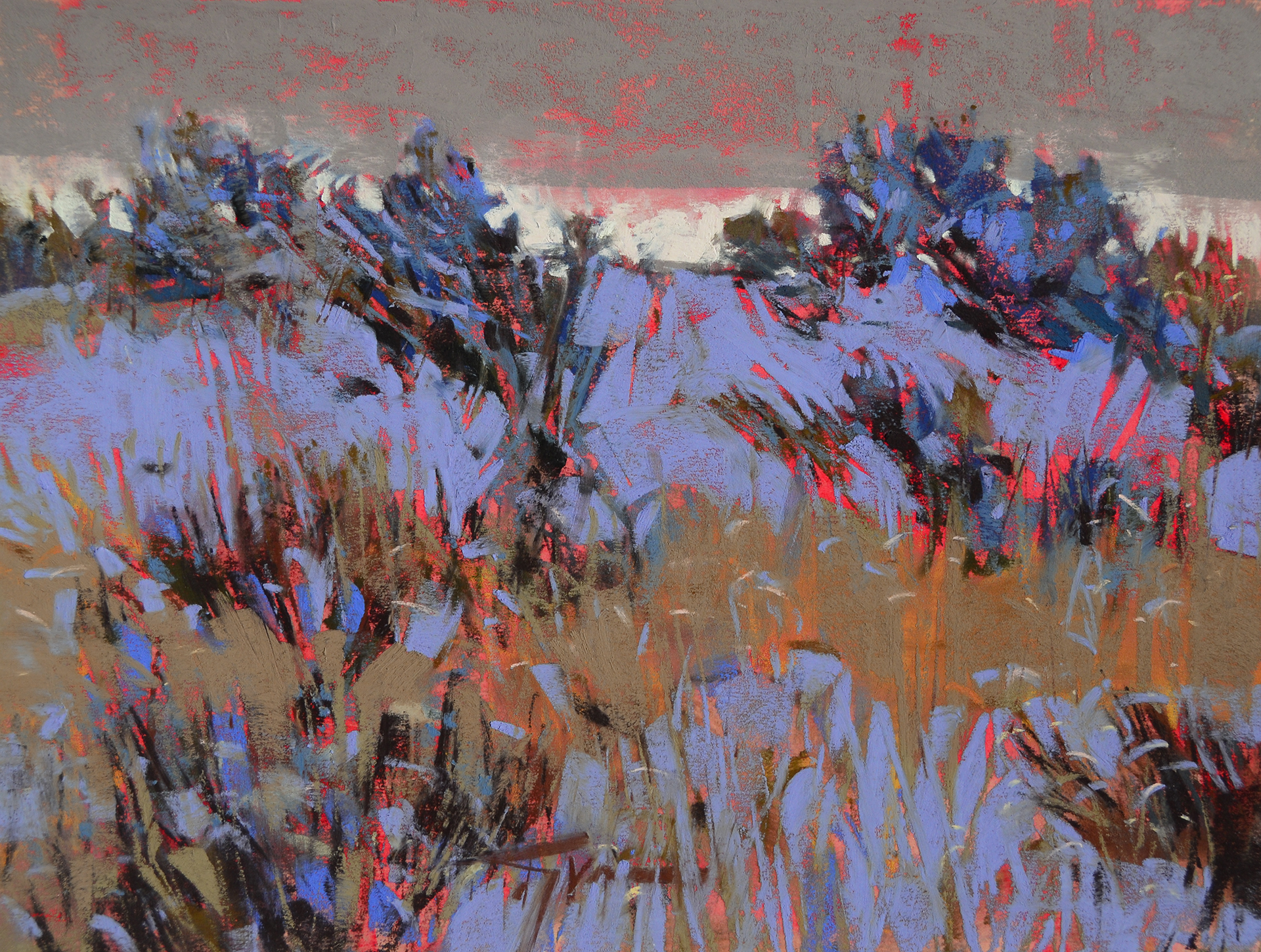


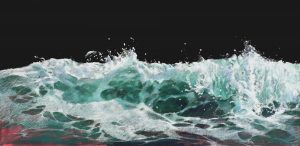
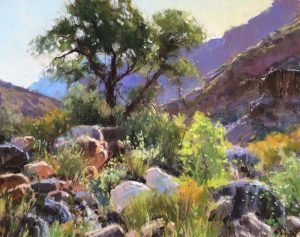




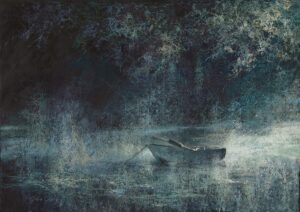
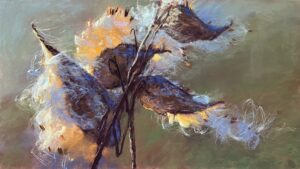
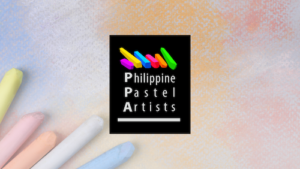
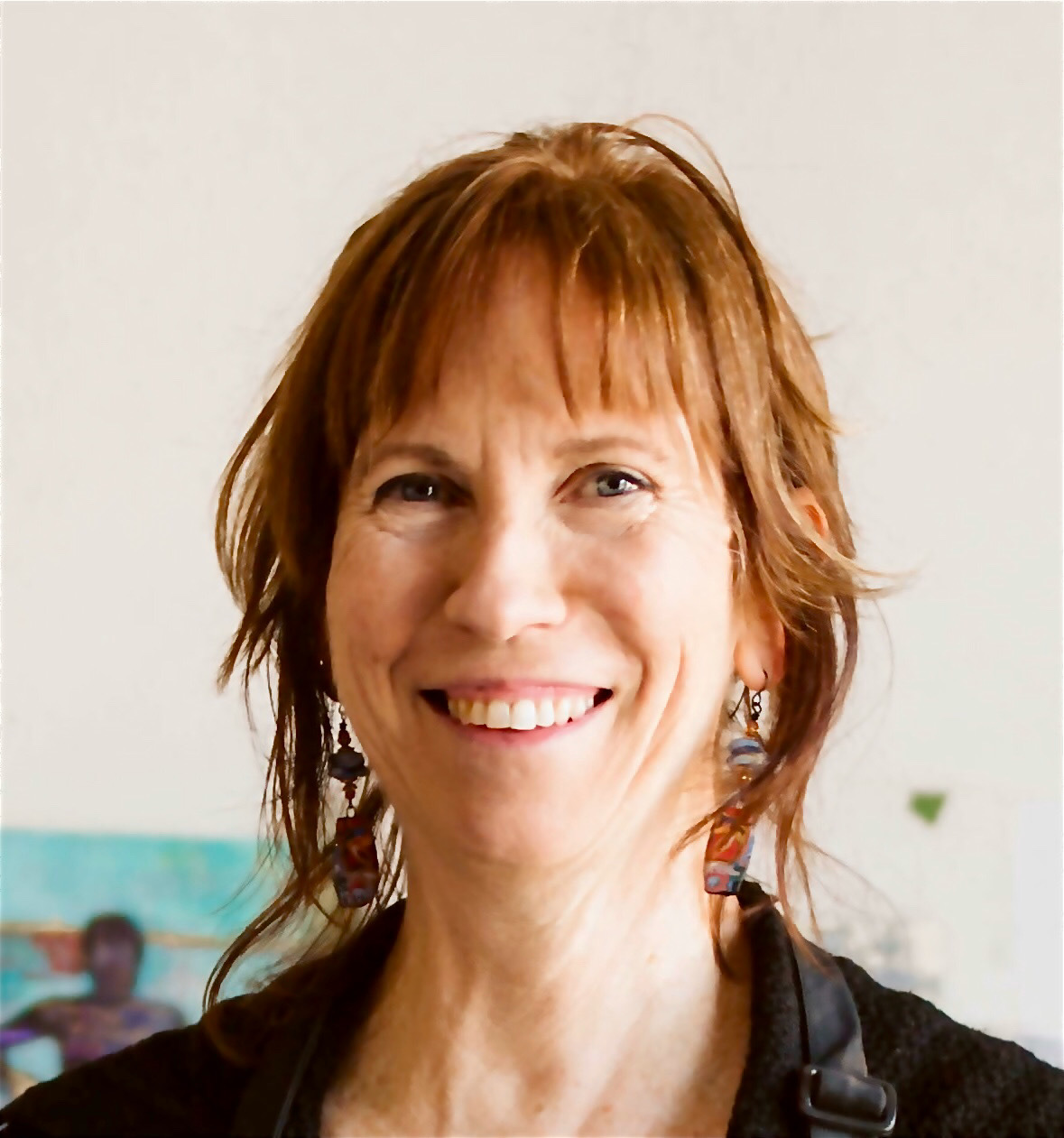
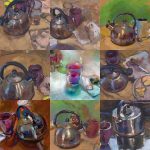

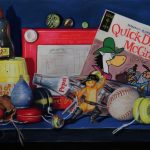




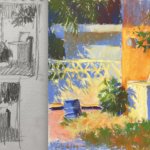
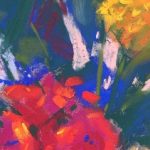
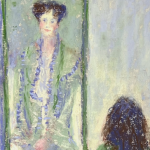
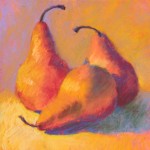


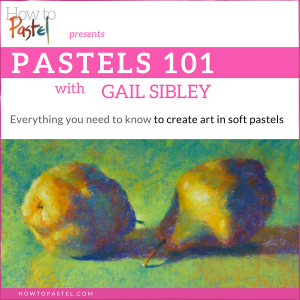


17 thoughts on “‘Leave It And Love It!’ Exclaims Jen Evenhus”
Really appreciated learning more about Jenn’s approach, her minimal strokes are so effective due to what she leaves “unpainted”, thanks for featuring her work, it is very fresh. I am really enjoying the “How to Pastel” blogs.
I know what you mean about those minimal strokes making Jen’s work so fresh!!
Glad you are enjoying the blogs 🙂
Thanks you Gail. Just love love Jen’s work. I am just starting and can’t get past the getting the painting the same as the reference, Jen is an inspiration and so are you so I will continue to try for imperfection.
Cheers
Laurel
Laurel, I’m sooo glad this is helpful to you. Yes, aim for imperfection 🙂
Evenhus’s approach reminded me of the Japanese concept of mono no aware that (shameless self-plug alert) I described in an article I wrote about the Heian Period writer, Sei Shonagon. To explain the notion, I borrowed a quote from Joseph Campbell: “A preference for, Joseph Campbell writes, “‘the unsymmetrical [that] suggests movement; the purposely unfinished [that] leaves a vacuum into which the imagination of the beholder can pour.'”
David, what a great quote from Joseph Campbell! Love the idea of the “vacuum into which the imagination of the beholder can pour.” (Love that word ‘pour’ here!) It’s so applicable in relation to Jen’s work. Thank you for sharing it.
David, Joseph’s quote, “vacuum into which the imagination of the beholder can pour,” paints the perfect idea I try to explain to my students.
Thank you!
I once attended a workshop by a pastel tutor who insisted on all background colour being covered up—including the original colour of the paper. Not a very creative approach, it stifles the power of what pastels can achieve. I rather like seeing underpaintings or paper colour peeking through; I agree it is a dynamic approach, especially when used with vigorous mark-making.
It’s funny what teacher’s teach sometimes! I wonder what I will look back on in my own teachings and think, “What the heck was I thinking?!” As you say, pastels have the power to achieve so much. Certainly Jen’s methods show us some of the possibilities!
Wow! Wonderful evocative paintings, fantastic new way of looking at things. Thanks so much for the morning inspiration.
How lovely to think this post gave you a morning inspiration Leslie 🙂
Exciting work! Love the yin/yang concept as a thought process before adding initial strokes. I admire Jen’s bold colors and sure marks.
Yes Gailen, I too like how Jen relates her way of painting to a Yin/Yang approach. Exciting indeed!
Gail, I’ve loved her work for so long, thank you for sharing this interview. I always love hearing the process and thoughts of other artists.
I agree with you Becky, there’s nothing like hearing another artist’s process. I am so happy Jen agreed to guest blog 😀
Jen always draws me in to her amazing works. The strength and vibrancy of her compositions are really calling out!
This explanation was just what I needed to read. Thanks so much!
I’m glad Jen could add to your knowledge base about her process Sharyn!!